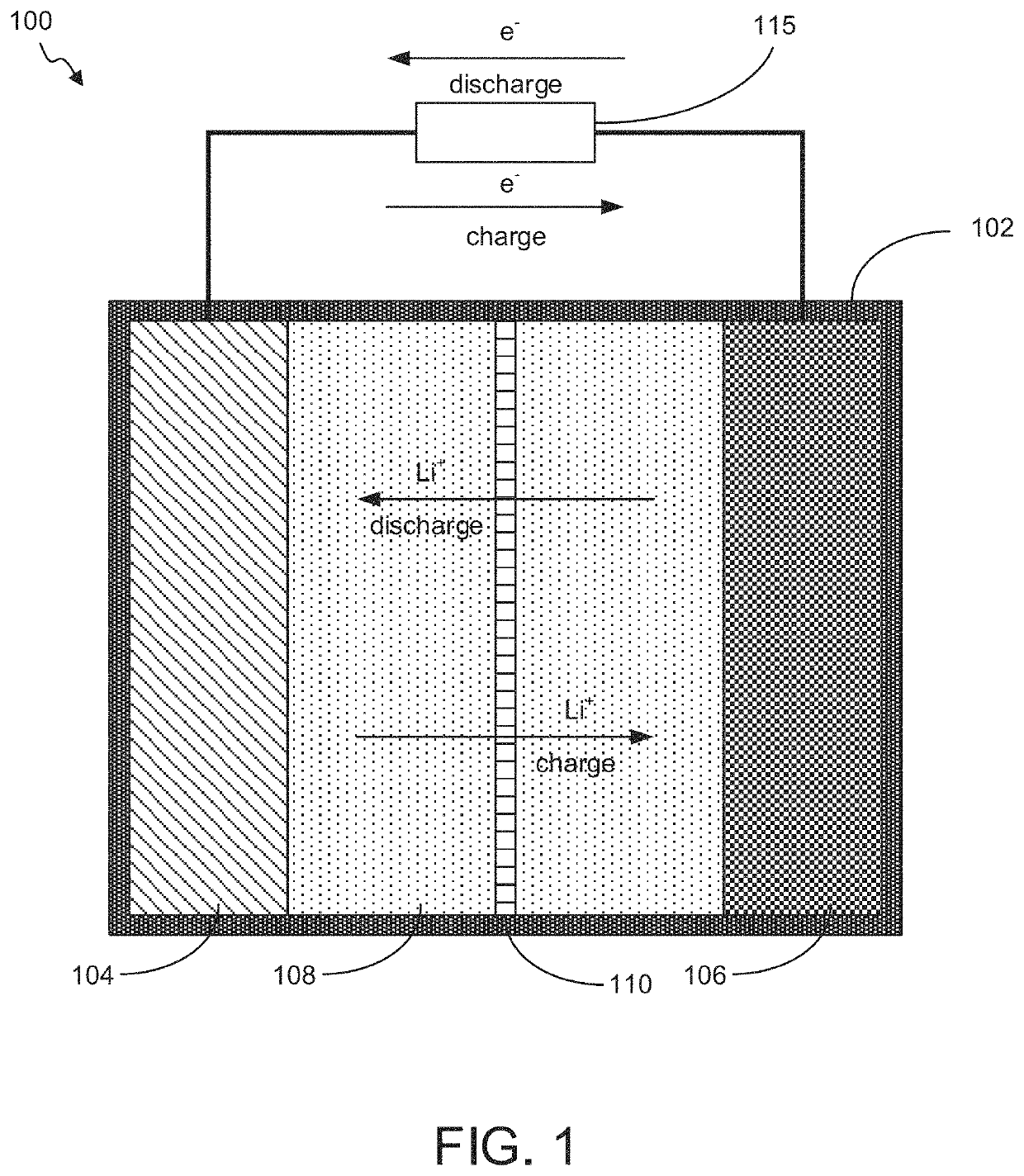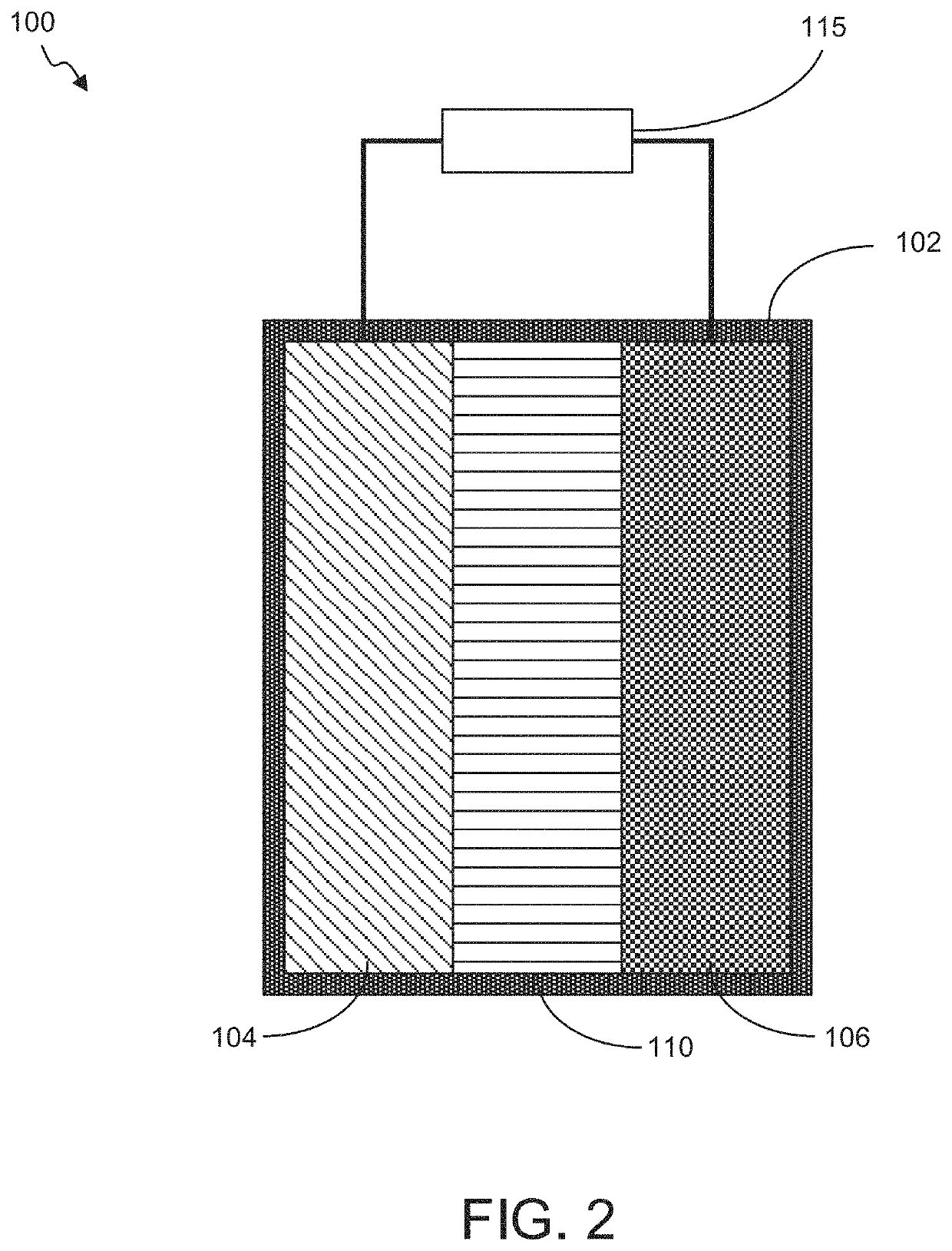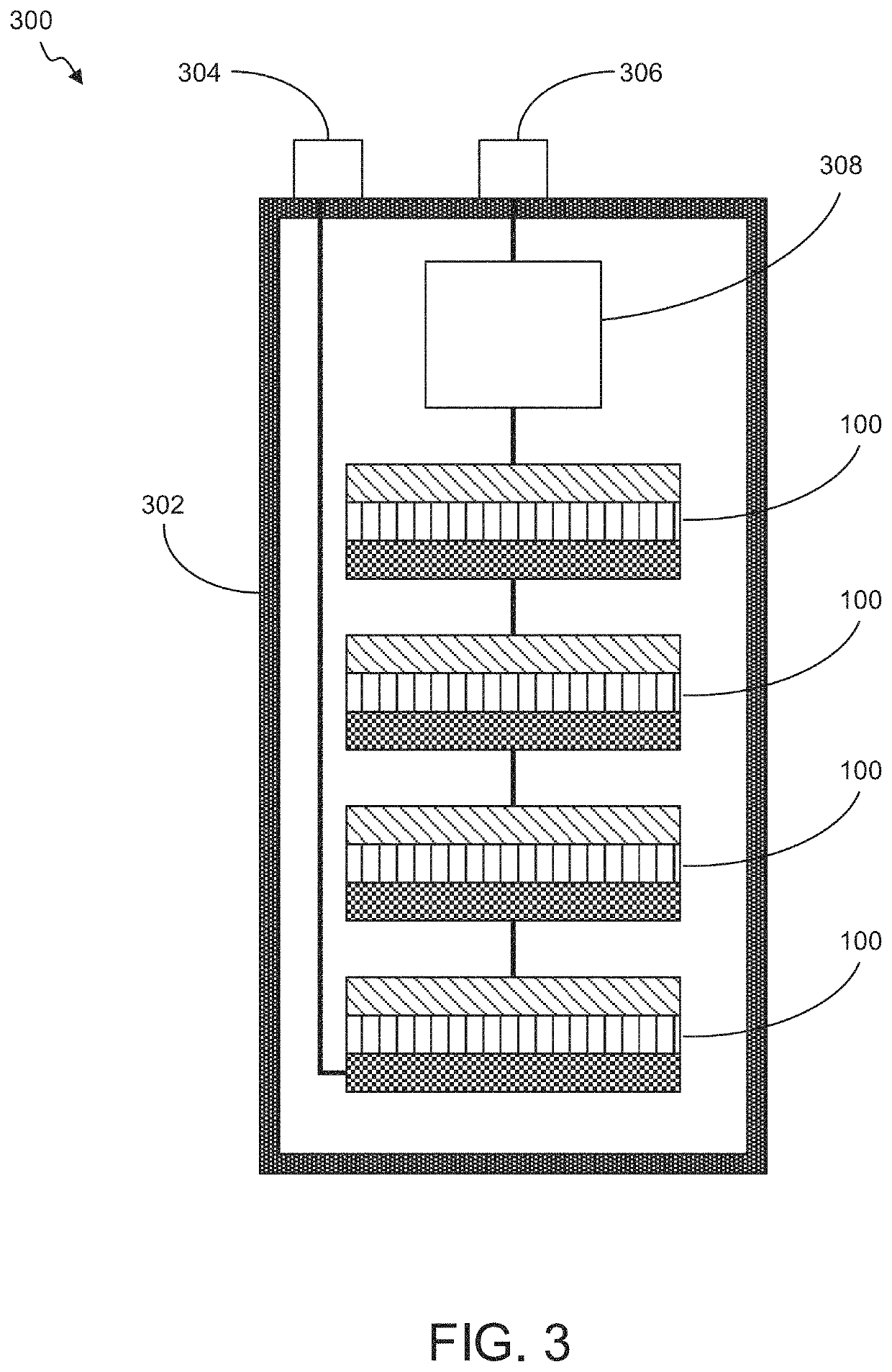Ultra high capacity performance battery cell
a high-capacity, battery cell technology, applied in the direction of wound/folded electrode electrodes, safety/protection circuits, sustainable manufacturing/processing, etc., can solve the problems of deterioration of other electrode components, degrading system components or catalyzing unwanted side reactions, and not always well defined or understood mechanisms by which the surface controls reactivity, etc., to improve the performance of the resultant materials, improve the cyclability and longevity of the device, and the effect of capacity
- Summary
- Abstract
- Description
- Claims
- Application Information
AI Technical Summary
Benefits of technology
Problems solved by technology
Method used
Image
Examples
Embodiment Construction
"d_n">[0079]Described herein are high capacity electrochemical cells and cell components, such as electrodes, for such cells. The disclosed electrochemical cells and electrodes comprise metal oxides, which may be AMO or non-AMO nanomaterials, and exhibit high capacity. In embodiments, the metal oxides are provided at a relatively low loading (weight percent) in the electrodes, such as at weight percents less than 30%, with the majority of the remainder of the electrodes comprising conductive materials and binders. Even with such low loadings, capacities of greater than 10,000 mAh / g in the case of AMO nanomaterial has been observed. The electrodes may be provided in layered or non-layered configurations. Example layered configurations include separate layers including AMO nanomaterial and low loading or non-AMO containing layers. In other embodiments non-AMO metal oxides may be layered with other non-AMO metal oxides of the same of different material. In further embodiment, layers ma...
PUM
 Login to View More
Login to View More Abstract
Description
Claims
Application Information
 Login to View More
Login to View More - R&D
- Intellectual Property
- Life Sciences
- Materials
- Tech Scout
- Unparalleled Data Quality
- Higher Quality Content
- 60% Fewer Hallucinations
Browse by: Latest US Patents, China's latest patents, Technical Efficacy Thesaurus, Application Domain, Technology Topic, Popular Technical Reports.
© 2025 PatSnap. All rights reserved.Legal|Privacy policy|Modern Slavery Act Transparency Statement|Sitemap|About US| Contact US: help@patsnap.com



